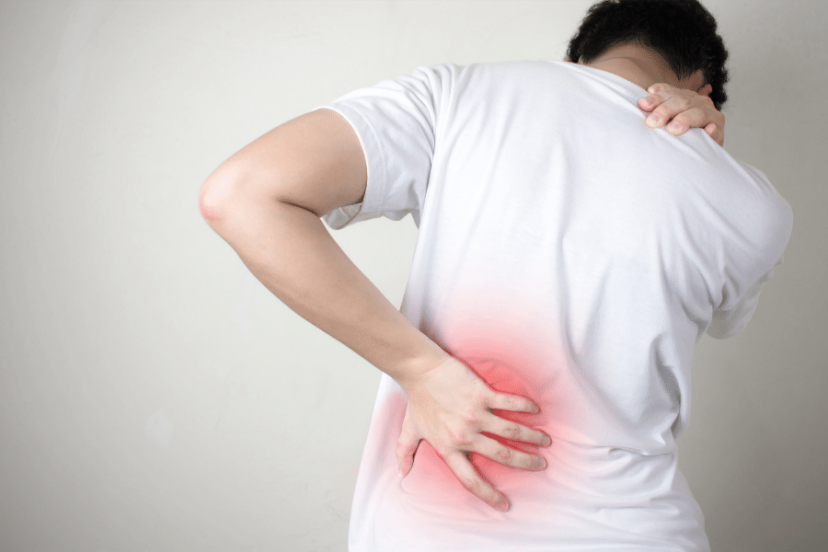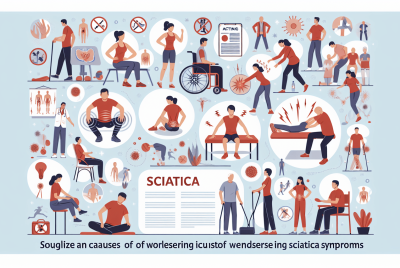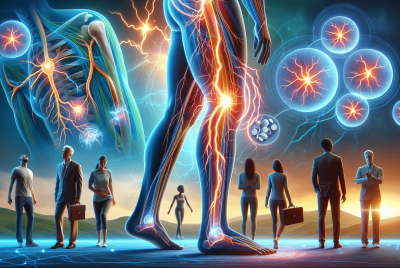Lower Back Pain Relief Treatments 2023: Comprehensive Guide
Introduction..
Does your lower back frequently bother you? Welcome to the community. A lot of us are grappling with the same issue. In this article, we’ll take a detailed look at a variety of Lower Back Pain Relief Treatments right here in this article with the intention of guiding you in the right direction & providing some helpful insights.
Common Causes of Lower Back Pain
Lower back pain can be instigated by various factors, including muscular strain, poor posture, herniated discs, or conditions such as osteoarthritis. Doesn’t it make you wonder, “Why me?”
Symptoms Associated with Lower Back Pain

Symptoms can vary from a dull ache to a sharp stabbing sensation. It might be a constant discomfort or something that comes and goes like an unwanted guest.
Symptoms can also be in the form of loss of sensation in the lower back area, difficulty moving or standing up straight, muscle spasms, and radiating pain down one or both legs.
If any of this sounds familiar, there may be some relief in sight – read on & stay positive as best you can!
Importance of Effective Treatment
Ignoring the pain can lead to further complications. It’s like trying to ignore a burning stove—eventually, it’s going to get hotter.
Effective treatment of back pain is crucial due to the significant impact it has on individuals’ quality of life and overall functionality. Untreated or inadequately treated back pain can lead to chronic conditions, drastically limiting mobility and physical capacity, and increasing the risk of disability. It can also contribute to mental health problems, including depression and anxiety, due to persistent pain and reduced activity levels.
Moreover, back pain is a leading cause of work absenteeism and can put substantial economic burdens on individuals, families, and societies at large. Effective treatment can mitigate these impacts, helping people return to their daily activities, maintain productivity, and sustain their mental well-being.
Therefore, seeking appropriate and timely treatment for back pain is not only beneficial for physical health but is also vital for maintaining emotional well-being and economic stability.
Common Lower Back Pain Relief Treatments
Over-the-Counter Medications
Over-the-counter (OTC) non-prescription medications for back pain, like non-steroidal anti-inflammatory drugs (NSAIDs) such as ibuprofen, or acetaminophen (Tylenol), can provide significant benefits, including quick relief from minor to moderate pain, and reduced inflammation and swelling. These medications are easily accessible and usually affordable, making them a common choice for immediate pain management.
However, it’s essential to be aware of potential risks and side effects. Long-term use or overuse of these medications can lead to serious health complications. NSAIDs can cause stomach ulcers, kidney problems, and increased risk of heart issues. Acetaminophen, while gentler on the stomach, can cause liver damage when taken in large quantities or over a prolonged period.
Additionally, these medications primarily address the symptoms of back pain and not the underlying cause. They may provide temporary relief but do not offer a long-term solution if the source of the pain is not addressed.
Always consult with a healthcare professional before starting or changing a medication regimen for back pain to ensure it’s safe and appropriate for your specific situation.
Pain Patches
Pain patches for lower back pain relief, such as lidocaine or capsaicin patches, can provide targeted, temporary respite by numbing the affected area or blocking pain signals to the brain. These can be quite effective & helpful, some more popular & best selling examples I’ve included below.
Click on any of the images below for more information
Physical Therapy
Physical therapy exercises can strengthen your lower back and improve flexibility, almost like greasing a rusty hinge.
For back pain, physical therapy offers a non-invasive approach to pain management, focusing on strengthening muscles and improving flexibility. It uses a combination of techniques such as manual therapy, heat and cold treatments, and specific exercises to reduce pain, enhance mobility, and prevent future back problems. Guided by skilled physical therapists, this therapy can be tailored to each individual’s needs, ensuring a more effective and safe route to recovery.
Lifestyle Modifications
Changes in lifestyle, like losing weight or improving posture, can significantly alleviate lower back pain. It’s like changing the tires of your car for better performance. Easily overlooked as we are all creatures of habit to some degree, lifestyle modification should be considered & implemented where necessary & in particular when identified & recommended by your health care professional.
Alternative Treatments
Ever considered chiropractic treatments, acupressure or acupuncture? They are like the mysterious heroes coming to save the day from lower back pain.
Lower back pain can often be relieved by alternative treatments that aim to address the root cause rather than merely alleviate symptoms. These include yoga and other stretching exercises, which can strengthen your core and improve flexibility, thereby reducing the stress on your back.
Both acupuncture & acupressure are a from of treatment that has been found effective in many cases.
Biofeedback, another alternative treatment, uses electronic sensors to monitor body functions like muscle tension, heart rate, and blood pressure. This information is then used to help teach relaxation and stress-reduction techniques.
Lastly, massage therapy is known to relieve tension in the back muscles, thus easing lower back pain.
As always, you should consult a healthcare professional before trying new treatments for lower back pain.
Delving Deeper into Lower Back Pain Relief Treatments
Acupuncture
Acupuncture, an ancient Chinese practice might help by rerouting energies and restoring balance in your body. It’s like rerouting traffic to avoid a congestion. This traditional Chinese medicine practice involves inserting thin needles into specific points on the body to balance energy flow and relieve pain.
Acupressure
Acupressure, an ancient healing art, can provide relief for lower back pain by applying pressure to specific points on the body to stimulate self-healing and restore balance.
Chiropractic Care
Chiropractic care, which involves hands-on spinal manipulation, can also help to improve your body’s physical function.
Yoga and Exercise
Regular yoga and exercises can be the key to unlock your escape from lower back pain. Imagine, wouldn’t it be nice to stretch without wincing?
Massage Therapy
Massages can help relieve tension in your lower back muscles. It’s like smoothing out the knots in a tangled necklace.
Medical Interventions
Surgical Treatments
In severe cases, surgery might be the last resort. It’s like calling the SWAT team when the situation gets out of hand.
Non-Surgical Medical Procedures
These could include injections or nerve blocks. It’s like specific targeted strikes against the pain.
Importance of Preventative Measures
Regular Exercise
Regular exercise is the holy grail of preventive measures. It’s like investing in your future pain-free self.
Check out some innovative exercise equipment that can aid or assist with toning & strengthening
Simply click on any of the images below to find out more!
Good Posture
Maintaining good posture is like laying a strong foundation for a building. Your back is that building.
Don’t discount the importance of something as simple as good posture. There are an array of posture support or correction type devices & equipment out there and at your disposal – here are a few below to consider
Click on the images to find out more!
Conclusion
Lower back pain can be a formidable enemy, but with the right Back Pain Relief Treatments and preventive measures, it can be conquered. Remember, your back is like a faithful steed—it serves you better when you take good care of it!
In conclusion, lower back pain, while common, should not be left untreated due to its potential impact on quality of life and overall health. There is a wide array of treatments available, from over-the-counter medications to alternative therapies like yoga, acupuncture, and physical therapy. It’s essential to remember that everyone’s experience with back pain is unique, and what works for one person might not work for another.
Therefore, exploring various options, preferably under the guidance of a healthcare professional, can help you find the most effective treatment plan for your situation. With the right approach, relief from lower back pain is entirely within reach, enabling you to regain your mobility and live a more comfortable, active life.
Further Resources
- The National Institute of Neurological Disorders and Stroke (NINDS) – Low Back Pain Fact Sheet: This webpage provides comprehensive information about the causes, diagnosis, and treatment of lower back pain, supported by scientific studies and expert commentary.
- American Physical Therapy Association (APTA) – Low Back Pain: APTA provides information about how physical therapy can be used to manage lower back pain, along with evidence-based treatment approaches and recommendations.
FAQs
1. Can lower back pain be a sign of something serious?
While lower back pain is common and often not serious, persistent or intense pain should be checked by a doctor.
2. Do over-the-counter medications always work?
No, they provide temporary relief. Chronic lower back pain requires more comprehensive treatments.
3. Can exercises aggravate lower back pain?
If done improperly, yes. Always seek professional advice before starting any exercise regimen.
4. Is surgery the only option for severe lower back pain?
No, other non-surgical procedures may also provide relief. Surgery is typically the last resort.
5. Can lower back pain be prevented?
While not all causes can be prevented, maintaining a healthy lifestyle and good posture can significantly reduce the risk.













